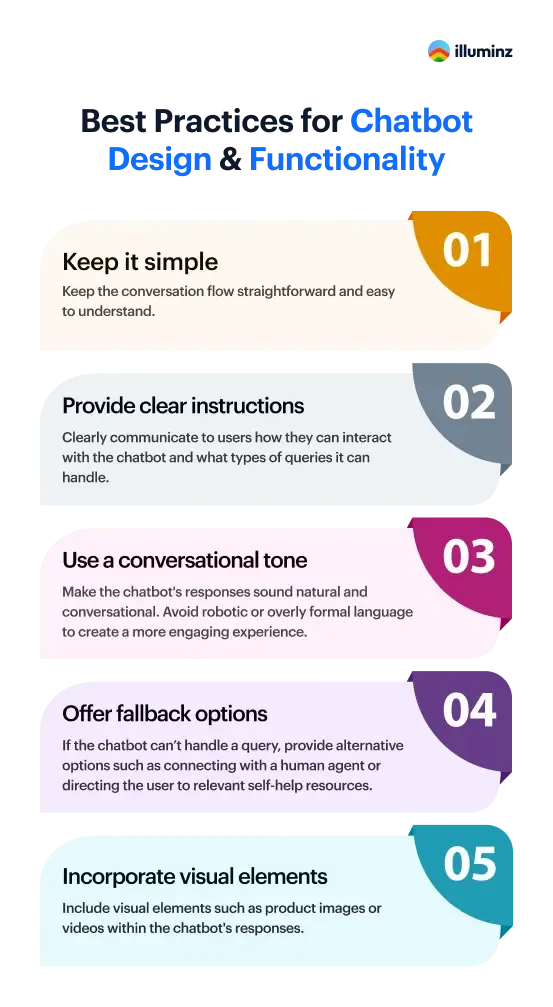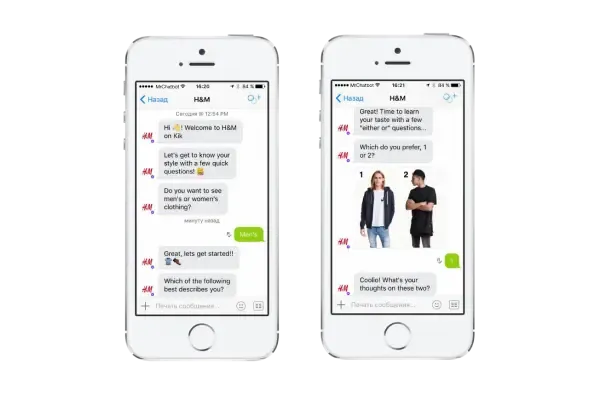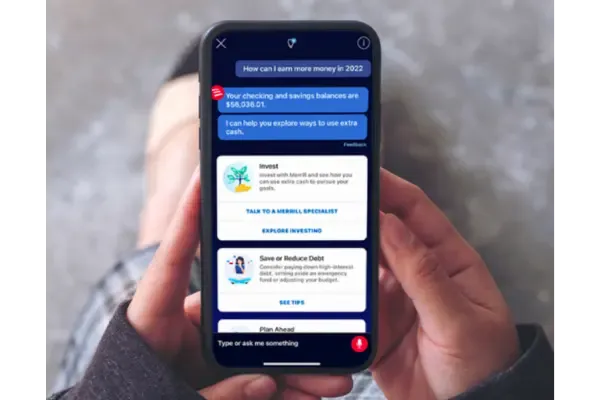Have you noticed how websites today are more than just static pages? They're like the front door to a business, welcoming visitors and giving them a taste of what the brand is all about. It's not just about having an online presence anymore; it's about creating an experience that draws people in and keeps them coming back for more.

And that's where chatbots come into play. They're like the friendly greeters at the door, but in digital form. Did you know these Amazing stats?
- In 2023, 1.4 billion people were open to using chatbots for communication.
- 80% of people have used a chatbot at least once.
That's not all, Chatbot interactions have a higher satisfaction rate – around 87.58% – than live chats with humans.
All these stats shows that Chatbots are transforming website interactions, offering quick responses and personalized experiences that engage users, turning them into loyal customers effortlessly.
What Chatbot Do?
- Provide real-time support.
- Address customer inquiries promptly.
- Guide users through the purchase process.
This not only improves user satisfaction but also increases conversion rates. Chatbots can offer 24/7 support, reducing wait times and ensuring that users receive assistance whenever they need it.
Moreover, they can provide personalized recommendations based on the users' preferences and browsing history, creating a more tailored and engaging experience.
The Importance of Website User Experience (UX)
Website UX plays a crucial role in shaping user perceptions and driving business success. When visitors land on a website, they expect a seamless and user-friendly experience. A positive UX not only increases the likelihood of conversions but also fosters user loyalty and advocacy. On the other hand, a poor UX can lead to frustrated users, high bounce rates, and missed opportunities.
To meet user expectations and stand out in a competitive landscape, businesses need to prioritize website UX. This involves
- Designing Intuitive Navigation- Ensure that users can easily find what they're looking for without confusion or frustration.
- Enhancing Page Load Times- A swift and responsive website keeps users engaged and reduces the likelihood of them leaving.
- Delivering Relevant and Valuable Content -Content should not only be engaging but also address the needs and questions of the audience.
- Instant Response: Chatbots address user inquiries promptly, ensuring a seamless experience, vital for users seeking quick assistance.
- Personalized Interactions: By analyzing data like user preferences and browsing patterns, chatbots provide tailored recommendations, enhancing user engagement and satisfaction.
- Guided Purchasing Assistance: Chatbots can simplify the purchasing process, answer product-related queries, and even facilitate transactions, minimizing customer journey friction and elevating satisfaction.
- 24/7 Support: Assists at any time of the day. Ensures users can get help when needed, contributing to a positive overall experience.
- Rule-based chatbots/Scripted chatbots: These chatbots operate based on predefined rules and scripts. They can handle simple queries and provide predefined responses. Rule-based chatbots are best suited for businesses with straightforward user support needs.
- AI-powered chatbots: These chatbots use artificial intelligence and machine learning algorithms to understand and respond to user queries. They can handle more complex requests and learn from interactions to improve their responses over time. AI-powered chatbots are ideal for businesses that require advanced user support capabilities.
- Hybrid chatbots: These chatbots combine both rule-based and AI-powered capabilities. They can handle a wide range of queries, from simple to complex, and provide personalized responses based on predefined rules and machine learning. Hybrid chatbots offer a balance between scalability and customization.
- Identify your goals: Before implementing a chatbot, clearly define your objectives. Are you looking to improve customer support, increase conversions, or both? Understanding your goals will help you choose the right type of chatbot and design its functionality accordingly.
- Choose the right platform: There are numerous chatbot platforms available, each with its own features and capabilities. Research and select a platform that aligns with your business requirements and integrates seamlessly with your website.
- Design the conversation flow: Map out the conversation flow you want your chatbot to follow. This includes identifying common user queries, defining appropriate responses, and incorporating any necessary decision-making logic. Keep the conversation natural and user-friendly to ensure a positive CX.
- Test and iterate: Once your chatbot is implemented, it's crucial to continuously test and iterate its functionality. Gather feedback from users and analyze data to identify areas for improvement. This iterative approach will help you refine your chatbot's performance over time.
- Response time: Measure the average time it takes for the chatbot to respond to user queries. Aim for fast response times to ensure a seamless experience.
- Customer satisfaction: Gather feedback from users to assess their satisfaction with the chatbot. Use surveys or ratings to gauge their overall experience.
- Conversion rates: Analyze the impact of the chatbot on your website's conversion rates. Compare conversion rates before and after the chatbot implementation to assess its effectiveness.
- User engagement: Track the level of user engagement with the chatbot, such as the number of interactions per session or the average session duration. Higher engagement indicates a more positive UX.
- User Intent Misinterpretation: Chatbots may struggle to accurately understand user intent, leading to incorrect responses.
- Inadequate Training Data: Insufficient or outdated training data can hinder a chatbot's adaptability to new queries and language patterns.
- Lack of Human Touch: Overly robotic or formal responses may result in a disconnect with users, impacting the overall experience.
- Integration Issues: Challenges in seamlessly integrating chatbots into existing systems can disrupt intended functionality.
- Complex Query Handling: Some chatbots may struggle with industry-specific or complex queries beyond their predefined capabilities.
- Insufficient Testing: Conduct thorough testing, including beta testing with real users to identify and fix issues before full-scale deployment.
- Chatbot Name: Implemented as "Kik" on the Facebook Messenger platform.
- Functionality and Features:
- Chatbot Name: 'Erica', seamlessly integrated into the mobile banking app.
- Functionality and Services:
- Voice-enabled chatbots: With gadgets like Amazon Alexa and Google Assistant getting popular, we'll soon see more chatbots that you can talk to just like you would with a person. They'll understand your spoken words and respond accordingly.
- Multilingual chatbots: As businesses expand globally, chatbots will need to support multiple languages to cater to diverse user bases. Multilingual chatbots will enable businesses to provide localized support and enhance UX for international users.
- Enhanced personalization: Chatbots will become even more proficient at analyzing user data and providing highly personalized recommendations and experiences. This level of personalization will further improve user satisfaction and drive conversions.
However, one of the most effective ways to enhance website UX is by incorporating chatbots.
How Chatbots Improve Website UX
Chatbots are virtual assistants that use artificial intelligence (AI) and natural language processing (NLP) to interact with website visitors in real time. They can handle a wide range of customer queries, provide personalized recommendations, and even assist with purchasing decisions.
4 Key Benefits of Chatbots for Website UX:
Types of Chatbots for Websites
There are several types of chatbots that businesses can incorporate into their websites, depending on their specific needs and goals. Here are the most 3 common types:
Implementing Chatbots on Your Website
Now that we understand the benefits of chatbots and the different types available, let's explore how to implement them effectively on your website.

Measuring the Success of Chatbot Implementation
To evaluate the success of your chatbot implementation, it's essential to measure key metrics and analyze the impact on your website UX. Here are some metrics to consider:
Why ChatBots Fail? - Common Challenges and Pitfalls of Chatbot Implementation
Addressing these challenges can significantly enhance the effectiveness of chatbots and prevent common failures.
Best Chatbot: Case Studies of Successful Chatbot Integration
To further illustrate the benefits of chatbots in enhancing website UX, let's explore a few case studies of successful chatbot integration.
H&M's Chatbot Integration

a) Personalized style recommendations following the latest trends.
b) Curated outfit selections from H&M's inventory.
c) Virtual try-on experience with a personalized avatar.
d) Store locator directing users to the nearest H&M outlets.
Bank of America's Chatbot Integration

a) Conducts routine financial transactions, such as balance checks and bill payments.
b) Delivers customized financial guidance.
Future Trends in Chatbot Technology
As we march forward with technological advancements, chatbots are also improving. Keep an eye on these emerging trends:
Conclusion
Chatbots are transforming the way businesses enhance website UX. By providing instant responses, personalized interactions, and guiding users through their purchasing journey, chatbots significantly improve user satisfaction and increase conversion rates. Businesses that effectively leverage chatbot technology can gain a competitive edge in the digital landscape. So, it's time to get on board with chatbots and give your website a boost!
Frequently Asked Questions and Answers on Chatbots
Question1 : When should you use chatbots?
Answer: Chatbots are particularly useful in scenarios where there is a need for instant responses, handling routine queries, providing personalized interactions, and guiding users through processes, such as customer support inquiries, frequently asked questions, and transactional interactions.
Question2 : Are chatbots effective?
Answer: Yes, chatbots can be highly effective. They excel in addressing routine and repetitive tasks, providing instant responses, and enhancing user engagement. However, their effectiveness depends on proper implementation, addressing potential challenges, and aligning with specific business goals.
Question 3 : Can chatbots replace human interaction entirely?
Answer: Chatbots are great for routine tasks but can't fully replace human interaction. They cannot handle complex issues and provide empathetic responses. The best approach is using both chatbots and humans for a balanced user experience.

